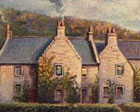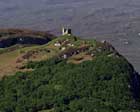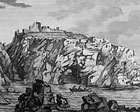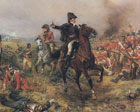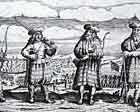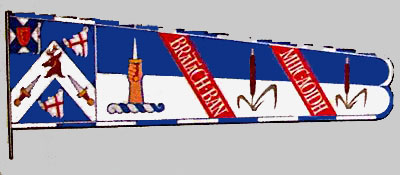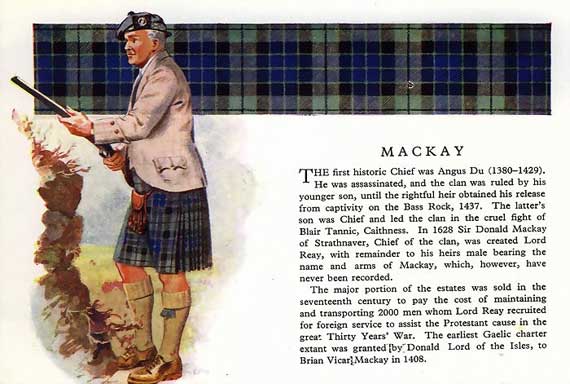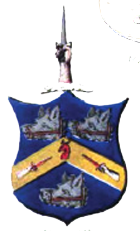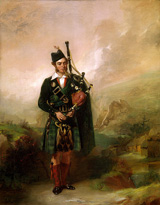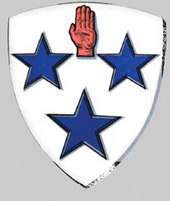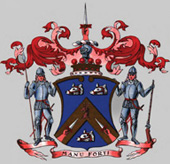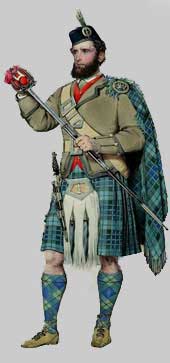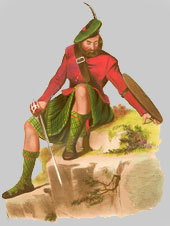 |
||
 |
||
Mackay ClanManu forti |
||||||
|
Clan Mackay information
|
||||||
 |
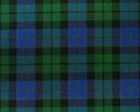 |
 |
||||
Clan crest badge |
Tongue House |
Mackay tartan |
Clan Location |
|||
Varrich Castle |
Borve Castle |
Battle of Waterloo |
capture of Stettin |
|||
Clan HistoryThe MacKay clan history should really be lost in the mists of time, considering the misfortunes piled on the clan the biggest one being cleared of their lands by the Sutherlands. Fortunately thanks to some scholars through the years there are some good historical publications remaining giving a better than most historical rundown on clan history. In the early years there are still the usual hazy areas, In the 11th and 12th century Scotland still consisted of a few remaining Principalities. The families who were to later form the MacKay Clan, as such, were living in the region of Moray. Descendants from the Royal House of Moray they were eagerly fighting for their right to the throne of Scotland, as other Princedoms had done previously. They settled and thrived in the area known later as Strathnaver. Iye MacEth, born in 1210, is looked on as the first leader of the group now resembling the MacKay Clan. He was the high stewart to the Bishop of Caithness and when his son married the Bishop's daughter they were gifted lands at Durness. This was a start for the the clan in their accumulation of lands and property. In 1296 the MacKays were at Stirling bridge with William Wallace. His eldest son John, now the 2nd Lord Reay, also led the clan to fight on behalf of the Royalist cause. He was captured early in his reign in 1649 and spent a year locked up in Edinburgh Castle. John's future father in law was to be Hugh Mackay of Scourie, better known as General MacKay who commanded the forces of William and Mary at the battle of Killiekrankie in 1689. George MacKay, the 3rd Lord Reay also supported the crown taking part against the Jacobites in the 1715 and 1745 uprisings. The clan formed the bulk of the 1st Sutherland Fencibles who were formed in 1759 and also the Reay Fencibles raised in 1793. The Thin Red Line, famed at Balaclava, refers to an action carried out by the 93rd (Sutherland Highlanders) Regiment of Foot in Crimea. The regiment was raised mainly from Strathnaver MacKays originally recruited in 1800. In 1815 at the Battle of Waterloo, the 79th ( Seaforth Highlanders) Regiment of Foot formed a square upon being attacked by the French Cavalry. Piper Kenneth Mackay, with no thought for his own safety, marched in and out of the square playing the tune "War or Peace". Kenneth was personally presented with a set of Silver Pipes from King George for his bravery. Eric the 7th Lord Reay took over chieftain-ship in 1797 during a period of depression. The country was in the middle of a 23 year conflict against Napoleon and it was draining the countries resources. Tens of thousands of highlanders gave their lives and the resultant loss of young labour was reducing yields and incomes of lands. There were also punitive road taxes raised against highland clans who had to pay towards improving or creating roads through their vast tracts of land. Eric, partly to reduce tax liabilities which he could not afford and partly to fund his extravagant life-style started to consolidate properties, selling, trimming and reducing. He borrowed £100,000 from the Countess of Sutherland and gave his lands as security. By 1829 he needed more money and sold of the rest of the clan estates for £300,000. Eric's greed and financial mismanagement had just gifted to the Sutherlands what they had, by every other means, been trying to posses for over 500 years. On the death of Eric 9th Lord Reay in 1875, the line ended and title was passed to his cousin Baron Ophemert who became the 10th Lord. Varrich Castle is a ruin that was once the main clan seat. It was built in the 14th century on a site that had previous fortifications. It overlooks the Kyle of Tongue and is about an hours walk from Tongue village. Originally called Caisteal Bharraich it consisted of two floors with walls four and a half foot thick. Little is known of it's history. Borve Castle was built on a promontory in Kirtomy Bay about 10 miles north-east of Tongue. It's destruction was ordered in 1555 after the Mackays had refused to appear before the Queen Regent, Mary of Guise ( mother and regent to the infant Mary Queen of Scots ). A cannon was pulled overland from Edinburgh and the castle was reduced to ruins in what was known as the battle of Garbharry. Rory Mor Mackay, the castle's commander was forced to surrender and hanged on the spot. Tongue House is located at the north end of the village of Tongue. When Borve was destroyed the clan seat moved to Tongue. The house was built in 1678 on the site of the previous house, burned by Cromwell's army, and was then the new clan seat. It was purchased and is still owned by the Countess of Sutherland. The Capture of Stettin picture above is of a German woodcut dated 1632 that mistakenly calls the soldiers Irish. Lord Reay and his Mackay's helped capture Stettin in Southern Ukraine (Crimea) in 1630. It is one of the earliest pictures of men in tartans. The painting of The Thin Red Line was painted by Robert Gibb, Scottish artist in 1881 showing the charge in 1854 at the Battle of Balaclava in Crimea. The original painting is housed at the Argyll and Sutherland Highlanders regimental museum at Stirling Castle. Although drawing material from many sources, (my gran was a MacKay from Tongue),
.
|
||||||
